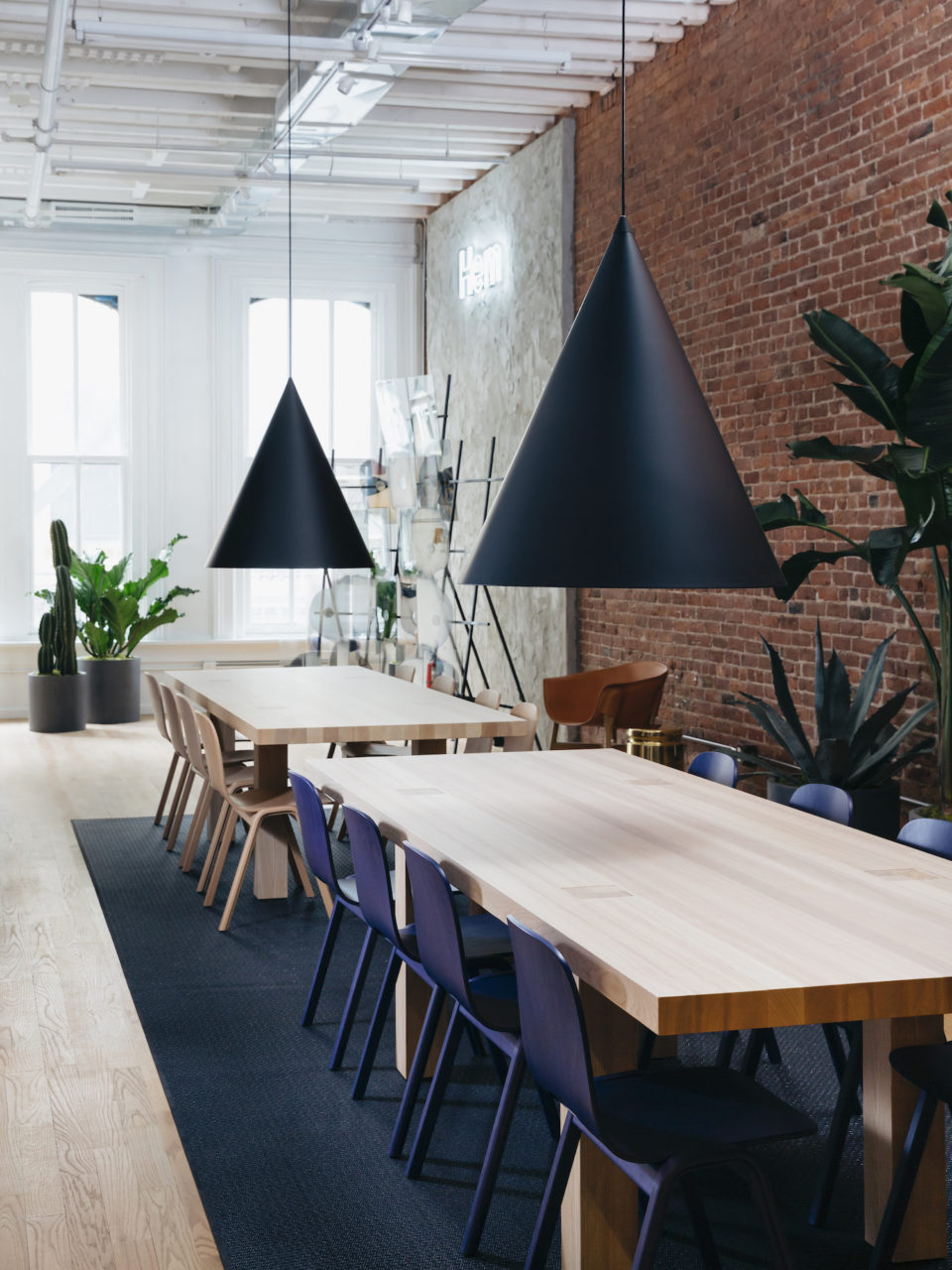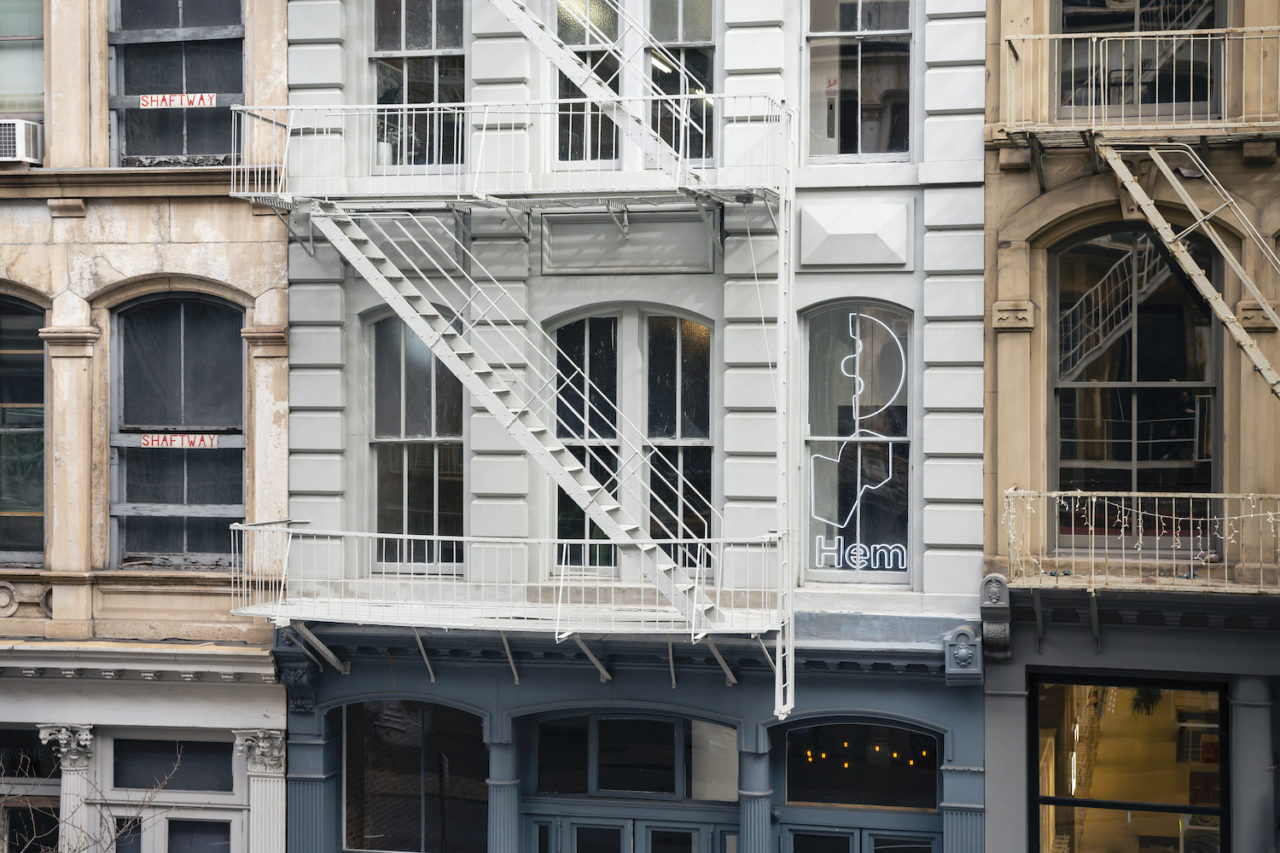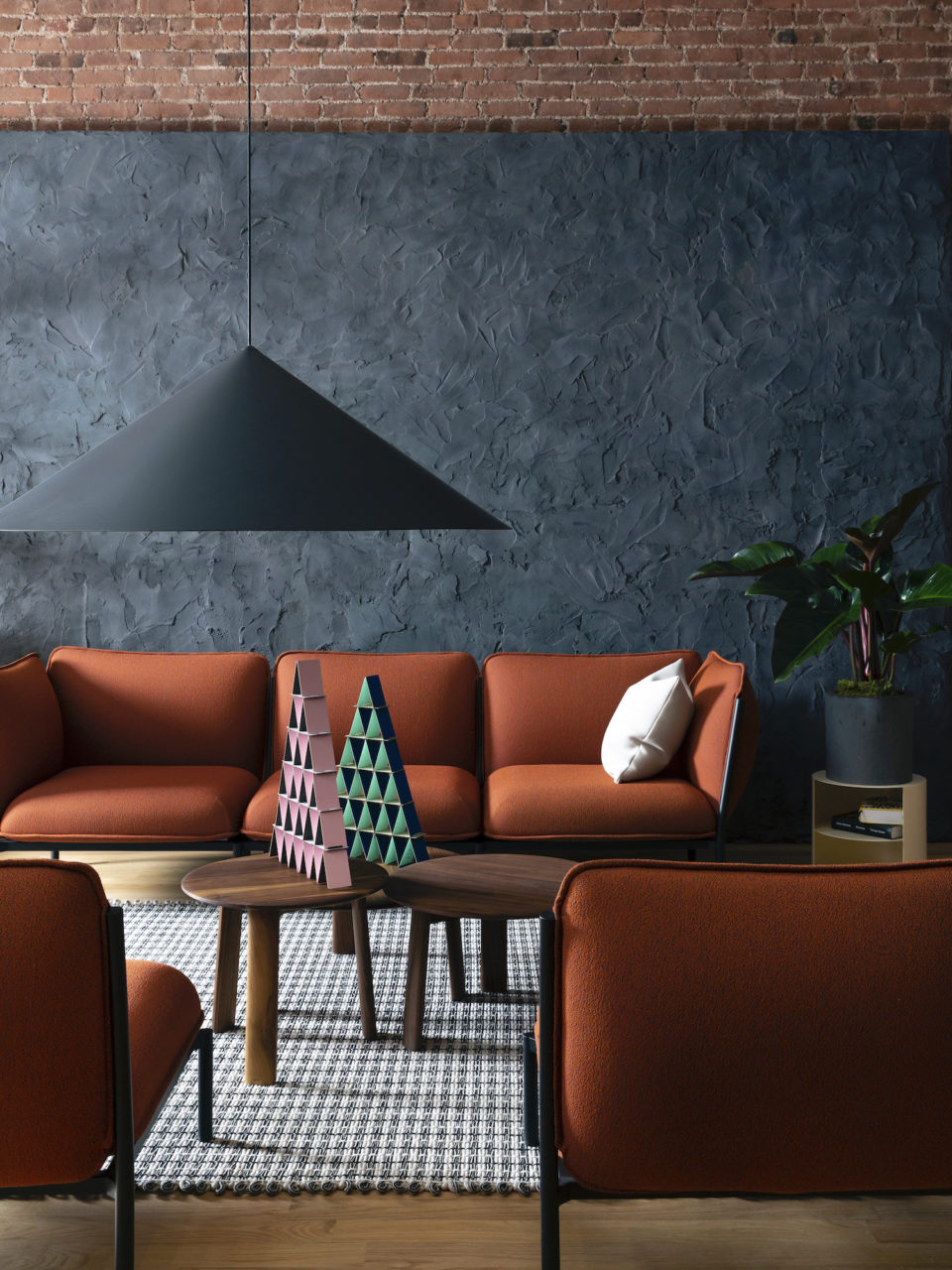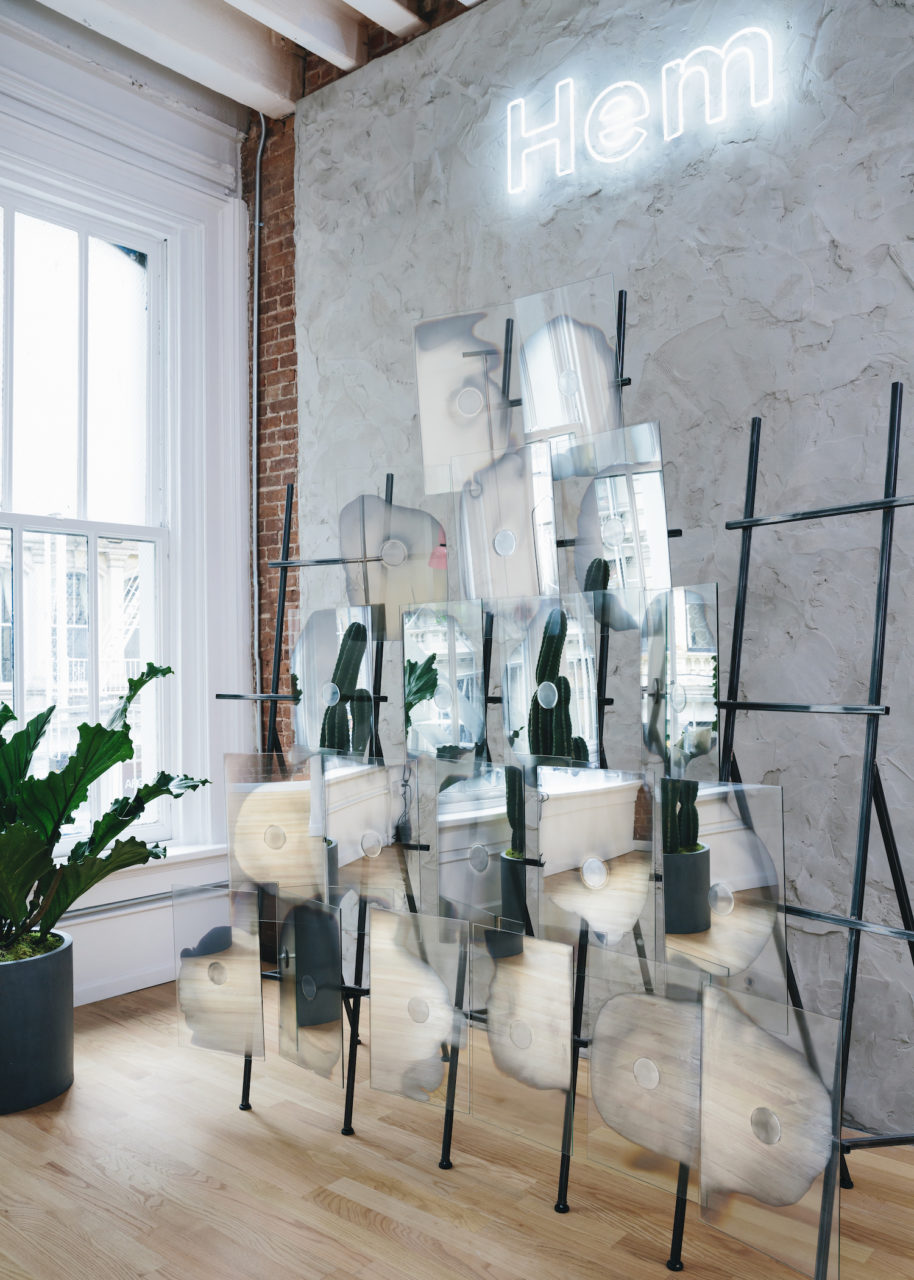Returning to the cobblestone streets of Manhattan, Stockholm-based furniture brand Hem opened the doors to its new permanent home in New York City. The studio has made a name for itself with affordable, well-made furnishings and designer collaborations with Max Lamb, Luca Nichetto, Pauline Deltour, GamFratesi, and Philippe Malouin, among others.
Now open on Broome Street, the space features furniture vignettes where visitors can browse the collections and purchase for same week delivery. The location operates more like a design studio (as opposed to a typical showroom), offering by-appointment creative services, in a setting furnished with the independent design brand’s sustainable furniture, lighting, and accessories. AN Interiors’ products editor Gabrielle Golenda sat down with Hem’s founder Petrus Palmer to discuss how he designed the New York studio and how he plans to engage the city’s creative community.


AN Interior: How did you pick the showroom location?
Petrus Palmer: It’s our second space in the United States. We opened our first store in downtown Los Angeles last fall. Coming to New York, we wanted to make sure we were in a neighborhood that matches the creative values of Hem. Soho is home to most of the design brands and there are a lot of design firms and architects. Maybe, more importantly, it’s the only truly walkable part of the U.S. You can walk around and be inspired.
We didn’t want to have a street-level space because we’re not yet open for the weekends. It’s a by-appointment studio for interior designers and architects.
AN: What was it about the space that drew you to it?
PP: It’s a beautiful brick and iron building. It has intrinsic value that you can build on. Then there are high ceilings and windows in both directions.
AN: Why are you bring a permanent location to New York City now?
PP: To meet more people. As a brand and purveyor of quality and design, trust is our main goal. You need to get that final piece of the puzzle that you don’t get online—online, you can see everything from the quantity that we have in stock to the price level, but you won’t actually get to touch anything. That’s so important. In the end, to be able to get face to face with the brand and touch the products is imperative.
AN: What was your approach to the design of the showroom?
PP: We put up some walls to show different settings. We have a blue curtain—which is also the fabric that we use for our furniture—to seal it off. We used big pendants from Wästberg, a Swedish lighting brand.



AN: What makes the New York location different from the studios in Los Angeles and Stockholm?
PP: In all of our locations we instill the Hem spirit of collaboration with site-specific installations. For the New York space, I worked with Brooklyn-based designers Chen & Kai, who I have known for years. It was the right time to work with them, and we devised a sculpture that would greet visitors when they walked in. Standing nearly 10 feet tall, the sculpture is made of a grid of 20 mirrors. Each mirror was made the old-fashioned way, by pouring silver nitrate on a panel. It stands out, kind of like a disco ball.
AN: How do you plan to use the space with the larger design community in the city?
PP: I hope we can be an environment where you can come back on a recurring basis for something new. I am looking forward to having workshops for co-ops and dinners to unveil new products.
The design community is a pleasant community. It’s a strong culture. People appreciate the soft things: art, food—everyday things.
AN: What designers will you be working with this year?
PP: We have an exciting new project coming up, which was supposed to be launched in Milan. I think maybe we will introduce it at New York Design. I can’t say exactly who, but we will be working with a designer from the U.K. that I have been admiring for years.
AN: What is your personal favorite Hem piece?
PP: I am very fond of the Kumo sofa. I think it summarizes everything that is good about Hem. High design, high quality, easy to assemble, flat-packed for shipping, comfortable.
AN: What is inspiring you these days?
PP: I am now really into space-age stuff, 1970s sofas. Anything by Pierre Paulin, like the Dune sofa.
Header image: Hem’s founder, Petrus Palmer. (Courtesy Hem)
